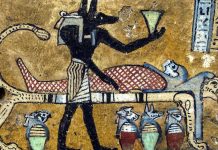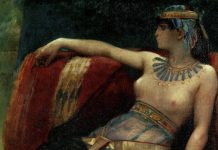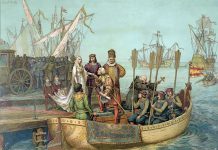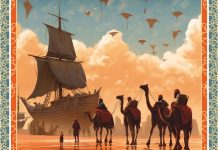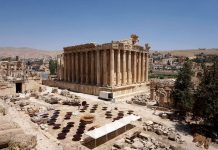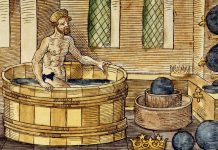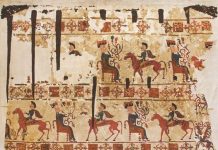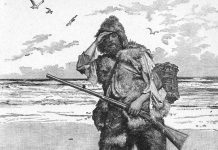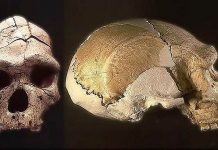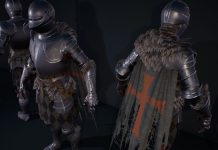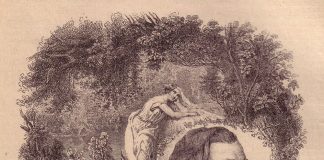Men wore fur trousers tucked into felt shoes or boots made of soft leather. The shirts were tailored, trimmed with a cord of bright red wool. A caftan was put on top, often made of skins with fur inside.
Some caftans are simply luxurious. One Pazyryk outfit is made of velvety sable skins and covered with fine embroidery of the type that is still popular in Afghanistan. It is also decorated with a leather applique in the form of a deer silhouette: the horns are surrounded by the heads of griffins, and the eyes are tiny golden beads – a memory that the deer, replaced by a horse, played a much greater role than now (on antlers).
Hats were vital for protection from icy steppe winds. Fur or felt, they were made with ears that could be raised or lowered, and, according to Herodotus, “stood rigidly with a pointed cap.” Hats of this type are still worn by Asian nomads.
The mummies of rich women are dressed no poorer than men. One woman is wearing an otter-trimmed squirrel coat with fur inside with a wide strip of horse skin along the hem. The sleeves are narrow, with a subtle decor. In addition to the caftan, she is wearing a sleeveless jacket made of otter fur, squirrel and sable, two pairs of felt stockings and boots made of red leather with a rich pattern even on the soles.
Jewels were stolen from the Pazyryk mounds, but thieves were not interested in this type of jewelry. One man’s arms, legs and torso are covered with a fantastic tattoo. The features of the deceased are clearly Mongoloid. Most of the Pazyryk people belonged to the northern Caucasoid type, but by the III century BC, Mongoloids had already begun to penetrate into the eastern part of Altai. The man is under 60, he is quite obese. The tattoo was clearly applied in his youth, as it turned pale and stretched in places where excess weight accumulated.
The Mongoloid is decorated with a whole zoo of real and mythical creatures: there are deer with horns decorated with bird heads, and toothy predators like leopards, but with wings. There was a fish lurking outside between the knee and ankle, and four wild sheep on the inside of the leg. The lion’s head of a griffin is impaled exactly opposite the heart. His arched back covers the torso from the side, and the tail ends in a spiral on the shoulder blade.
“Lionheart” was killed in battle. His skull has been pierced and his scalp has been removed. Herodotus writes about scalping an enemy as a ritual of appropriating his life force. However, in this case, the comrades compensated for the loss by sewing a wig to the fallen hero. A fake beard of anthracite-colored horsehair is attached to the chin.
In the eyes of ancient authors, tattooing and scalping were among the most amazing customs of nomads. The Greeks associated every mark on the body with a slave brand. However, the “barbarians” wore tattoos with pride.
Decorative elements of clothing and household utensils of the Pazyryk people also reflect the close connection of man with the animal world. Piercing glances and strong beaks of eagles, flexible backs and sharp teeth of wild cats – everything is conveyed with expressive simplicity and precision.





